
Imagine trying to track assets in a scorching metal stamping plant or a sweltering chemical facility. Standard RFID tags? They often buckle under the pressure. That’s where heat resistant RFID tags step in as the unsung heroes, ensuring your tracking systems don’t melt down when the heat is on.
In today’s industrial landscape, RFID technology is no longer a luxury—it’s the backbone of efficient asset management and streamlined operations. For industries battling extreme temperatures, heat-resistant RFID solutions are becoming absolutely essential. Let’s dive into why these specialized tags are so critical, what makes them tick, and how they’re revolutionizing industries operating in the fire of harsh environments. If you need tracking that can take the heat, you’re in the right place.
1. What Exactly Are Heat Resistant RFID Tags?
Heat resistant RFID tags are not your average tracking devices. They’re specifically engineered to laugh in the face of extreme temperatures. Think of them as the marathon runners of the RFID world, built for endurance in environments where standard tags would simply wave the white flag. Unlike their less robust counterparts, these tags are crafted from seriously durable materials and packed with advanced tech, allowing them to perform reliably in conditions reaching a blistering 200°C (392°F) and beyond.
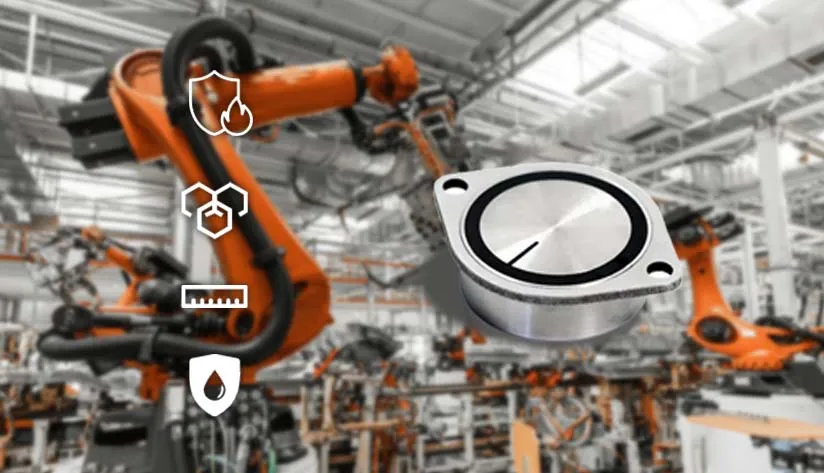
Key Features of Heat Resistant RFID Tags:
- High-Temperature Materials: Forget flimsy plastics. Industrial heat resistant RFID tags are forged from tough stuff like ceramic, specialized high-temperature plastics, or robust metal alloys. These materials are the secret sauce, ensuring the tags can shrug off intense heat without losing their functionality.
- Specialized Packaging: It’s all about protection. These tags are encased in heat-shielding packaging, like a tiny fortress guarding the chip and antenna from heat damage. This specialized encapsulation is crucial for maintaining performance in extreme conditions.
- Enhanced Read/Write Capabilities: Tough environment, no problem. Top-tier heat resistant RFID tags are designed to maintain rock-solid communication, ensuring accurate data reading and writing even when the mercury is soaring. Reliability is the name of the game.
Thanks to these specialized features, durable heat resistant RFID tags are the go-to solution for demanding environments like industrial manufacturing, automotive tracking through paint booths, and even the hazardous world of material handling. They deliver the resilience needed to keep operations running smoothly, even when things get hot—really hot.
2. Key Industries Thriving with Heat Resistant RFID Tags
Heat resistant RFID tags are not just a niche product; they are a critical component for numerous industries where high temperatures are part of the daily grind. These tags ensure consistent performance and unwavering reliability, enabling businesses to track assets, monitor vital equipment, and manage inventory efficiently, all while withstanding punishing conditions.
Key Industries Using Heat Resistant RFID Tags:
- Manufacturing: From the roaring heat of furnaces to the intensity of assembly lines, manufacturing facilities are prime territory for heat resistant RFID tags. They are essential for tracking parts, tools, and finished products in these high-temperature zones. Imagine tracking components through heat treatment processes with pinpoint accuracy – that’s the power of these tags, minimizing downtime and supercharging inventory management.
- Automotive: The automotive industry pushes materials and processes to the limit. Heat resistant RFID tags are deployed to monitor components throughout production, from engine testing to paint curing ovens. These tags provide real-time data on critical parts, surviving the heat and pressure of industrial environments.
- Chemical and Oil & Gas: Chemical plants and oil & gas refineries are inherently extreme environments. Robust heat resistant RFID tags are vital for monitoring assets like pipes, valves, and equipment exposed to intense heat and volatile substances. Continuous tracking of machinery is paramount for preventive maintenance and safety, minimizing operational disruptions in these high-stakes industries.
- Food Processing: Even the food industry isn’t immune to extreme temperatures. Food-grade heat resistant RFID tags are used in cooking and freezing processes to monitor product temperatures, ensuring food safety compliance and enhancing traceability from processing to packaging.
Real-World Impact: Across these diverse sectors, heat resistant RFID tags are driving significant improvements in operational efficiency, asset tracking precision, and overall safety. By ensuring continuous monitoring in extreme conditions, these tags reduce reliance on manual checks, prevent costly errors, and boost both productivity and reliability in the toughest environments. They are the silent workhorses ensuring operations keep running smoothly, no matter how hot it gets.
3. Benefits of Heat Resistant RFID Tags in Harsh Environments
Investing in heat resistant RFID tags is like equipping your operations with a superpower against harsh conditions. They bring a wealth of advantages to high-temperature environments, empowering businesses to boost efficiency, maintain asset integrity, and enhance safety protocols. Let’s break down the game-changing benefits:
Enhanced Durability
Industries like steel manufacturing, automotive, and oil refining put equipment through hellish conditions. Standard RFID tags simply can’t survive. Heavy-duty heat resistant RFID tags are engineered to thrive in these extremes, maintaining consistent functionality where ordinary tags would fail. Built with specialized, high-temperature materials, their rugged design prevents degradation, ensuring reliable performance under intense heat.
Operational Efficiency
Imagine real-time asset visibility, even in the most challenging environments. High-performance heat resistant RFID tags enable just that, streamlining operations and reducing the need for manual intervention. In sectors like foundries and chemical plants, these tags track equipment and materials without data loss, ensuring smooth workflows and minimizing costly delays. For example, in a steel mill, industrial RFID tags provide crucial data on the location and status of high-heat equipment, preventing misplacements and reducing downtime. Operators always know where their tools are, accelerating processes and eliminating bottlenecks.

Cost Savings
While premium heat resistant RFID tags might have a higher initial price tag compared to standard options, they are a smart long-term investment. Their ability to withstand extreme temperatures translates to fewer replacements and less maintenance, significantly lowering overall costs. By providing dependable, long-lasting performance in high-heat settings, these tags minimize operational disruptions caused by malfunctioning tracking systems.
Consider the food processing industry, where equipment endures constant cycles of extreme heat and cold. Long-lasting heat resistant RFID tags drastically reduce the need for frequent replacements, delivering a substantial return on investment over time.
Safety and Compliance
In hazardous environments, safety is paramount. Reliable heat resistant RFID tags play a critical role in workplace safety by providing real-time tracking of personnel and equipment. This helps mitigate risks associated with extreme heat, such as accidents from misplaced tools or unmonitored equipment. Moreover, these tags support regulatory compliance by ensuring continuous monitoring of equipment used in dangerous conditions. For instance, in a chemical processing plant, durable RFID solutions can track safety equipment exposed to high temperatures, offering operational insights and real-time alerts to prevent safety incidents and maintain regulatory adherence.
Asset Integrity
Protecting high-value assets is crucial. High-quality heat resistant RFID tags help ensure that critical machinery and parts maintain their integrity, even under extreme conditions. In industries like oil and gas, where equipment faces fluctuating temperatures, these tags monitor asset condition in real-time, reducing the risk of failures and extending asset lifespan. By enabling accurate and efficient tracking in high-heat environments, businesses enhance operational reliability and minimize unexpected breakdowns.
4. Key Features to Look for in Heat Resistant RFID Tags
Choosing the right heat resistant RFID tag for extreme environments is crucial for ensuring performance and longevity. You need to make sure the tag can handle the specific challenges of your industry. Here are the essential features to consider when selecting the ideal tag for your business:
High-Temperature Range
The core function of a heat resistant RFID tag is its ability to endure extreme temperatures without compromising performance. Understanding your operational temperature requirements is key. Some tags handle -40°C to +200°C, while others withstand even higher heat, up to +300°C or more. Whether you’re in metal processing, chemical manufacturing, or food production, select a tag that matches your environment’s temperature extremes. For example, steel manufacturing near furnaces can exceed 1000°C, demanding specialized ultra-high heat RFID tags for continuous operation.
Durable Packaging
In harsh environments, the tag’s packaging is just as critical as the chip. It must resist heat, abrasion, moisture, and chemicals. Look for tags with rugged enclosures made from materials like ceramic, stainless steel, or other high-temperature resistant substances. These robust casings protect the RFID components and ensure the tag remains functional in tough working conditions. Ceramic tags, for instance, offer excellent protection against high temperatures and corrosive substances, making them perfect for chemical plants and refineries.
Long Read/Write Distance
Even in high-heat conditions, reliable read/write distance is crucial. The tag’s read range is vital in industrial settings where quick information access is essential. Opt for tags that maintain a good read range even in harsh conditions. Some advanced heat resistant RFID tags operate at distances of several meters, ideal for large facilities where assets need tracking over long distances. In expansive warehouses or steel mills, tags with a long read/write range help operators quickly scan multiple assets, boosting operational efficiency.
Chemical Resistance
Many extreme environments involve exposure to corrosive chemicals. In oil & gas, mining, and chemical manufacturing, industrial RFID tags must withstand oils, solvents, acids, and other harsh substances. When selecting tags, prioritize chemical resistance. Tags with a robust outer layer, such as epoxy resin or specialized coatings, offer enhanced protection against chemical degradation.
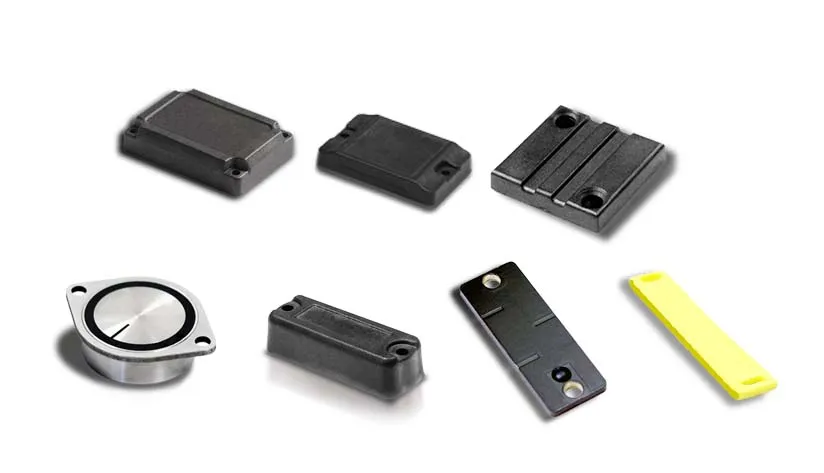
Adaptability to Different Surface Types
Heat resistant RFID tags must be compatible with various surfaces – metal, plastic, wood, etc. Metal surfaces can interfere with RFID signals, so specialized “metal-mount” tags are often necessary. For example, in a steel plant, a metal mount heat resistant RFID tag ensures optimal performance even when attached to hot, metallic surfaces.
Long-Lasting Durability
A key advantage of heat resistant RFID tags is their extended lifespan. In environments with prolonged heat exposure, durability is paramount. Choose tags rated for long-term use, designed to withstand repeated thermal cycles without degrading. High-quality tags made from premium materials like high-temperature plastic, ceramic, or stainless steel offer superior longevity and wear resistance.
In conclusion, selecting the right heat resistant RFID tag requires careful consideration of temperature range, durability, packaging, and features like chemical resistance and surface adaptability. By aligning these features with your industrial needs, you’ll choose tags that perform reliably in harsh, high-heat environments. Whether tracking equipment in steel mills, manufacturing plants, or chemical facilities, the right RFID solution will enhance operational efficiency, asset management, and safety in extreme conditions. Invest in heat resistant RFID tags to ensure your operations run smoothly and efficiently, even when the heat is on.
5. The Future is Hot: The Importance of Heat Resistant RFID Tags in Industry
Heat resistant RFID tags are not just a current necessity; they are increasingly vital for the future of industries facing extreme temperatures. As we’ve seen, these specialized tags offer enhanced durability, improved efficiency, and significant cost savings. From accurate tracking in high-temperature zones to protecting critical equipment in manufacturing, automotive, and chemical processing, these tags are essential for maintaining seamless operations.
Looking ahead, the demand for robust RFID tracking in extreme environments will only grow. Innovations in RFID technology will likely bring even more advanced solutions, further enhancing performance, reliability, and integration across various sectors. For businesses operating in extreme temperature conditions, investing in industrial-grade heat resistant RFID technology is a strategic move that boosts operational efficiency, minimizes downtime, and ensures the safety and longevity of assets. Explore heat resistant RFID tag options today to future-proof your operations.
Ready to take the heat and optimize your business? Contact us to learn more about heat resistant RFID tags and how they can streamline your processes and improve your bottom line. Let’s discuss how RFID asset tracking solutions can benefit your specific needs.
FAQ Section
1. What temperature range do heat resistant RFID tags support?
Heat resistant RFID tags for sale are engineered to withstand extreme temperatures, typically from -40°C to +200°C, depending on the specific tag and its construction. Some specialized tags can tolerate even higher temperatures using advanced materials and coatings. Inquire about high temperature RFID tag specifications for your specific application.
2. How long do heat resistant RFID tags last in extreme conditions?
The lifespan of a long-lasting heat resistant RFID tag depends on the specific environmental conditions. Generally, these tags can last for several years, even in harsh environments, thanks to their durable construction and specialized materials. However, prolonged exposure to extreme conditions may impact longevity, so regular monitoring is recommended. Choose durable heat resistant RFID tags for extended performance.
3. Can heat resistant RFID tags be customized for specific applications?
Yes, many customizable heat resistant RFID tags can be tailored to meet your unique business requirements. Customizations can include adjusting temperature thresholds, using specific materials for enhanced durability, or selecting particular form factors to fit your equipment. Request custom heat resistant RFID tag solutions to meet your exact needs.
Recommended Products
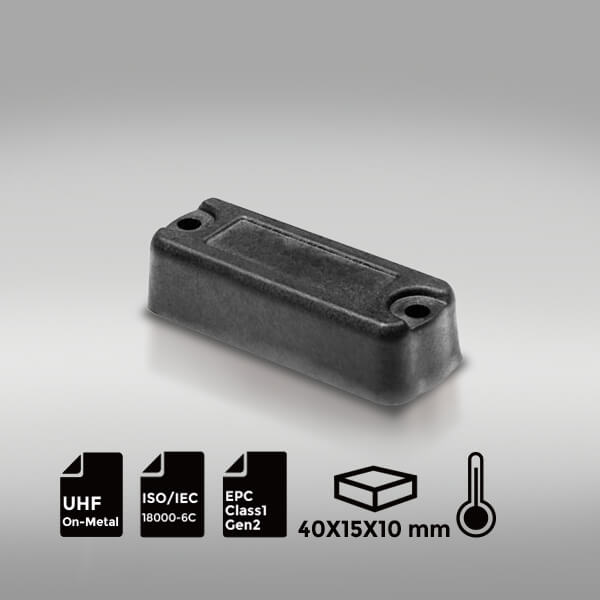
Heat Resistant NXP UCODE8 PEEK RFID On-Metal Tag | 40×15mm
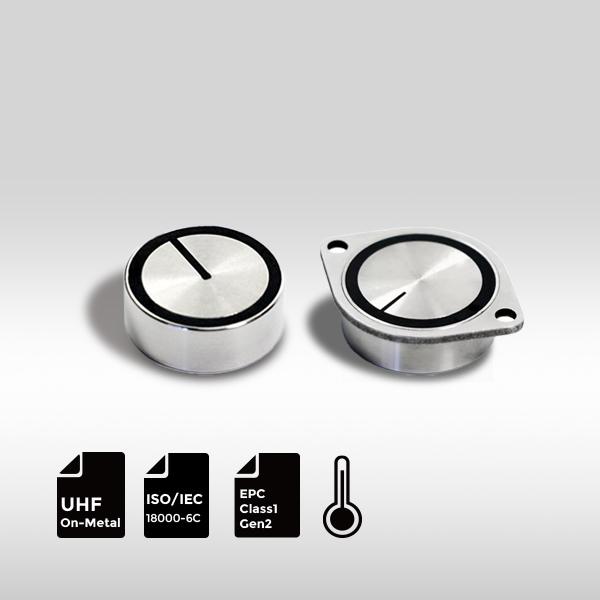
Heat Resistant UCODE8 Stainless Steel RFID Embedded Tag
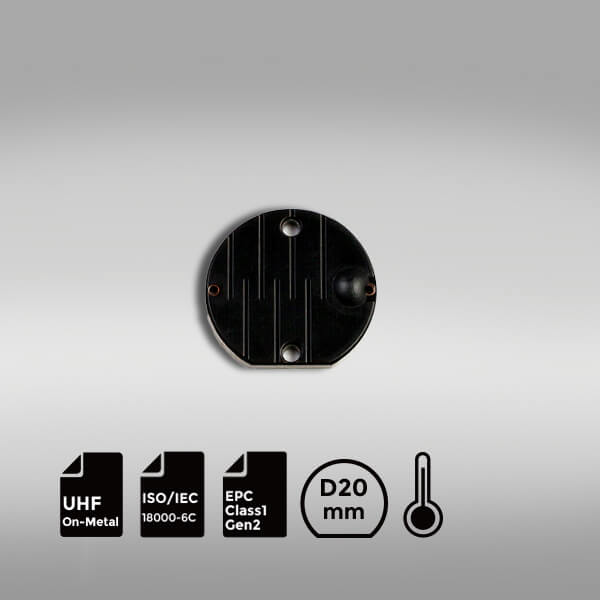
Heat Resistant Alien Higgs4 High Temperature Material RFID On-metal Tag
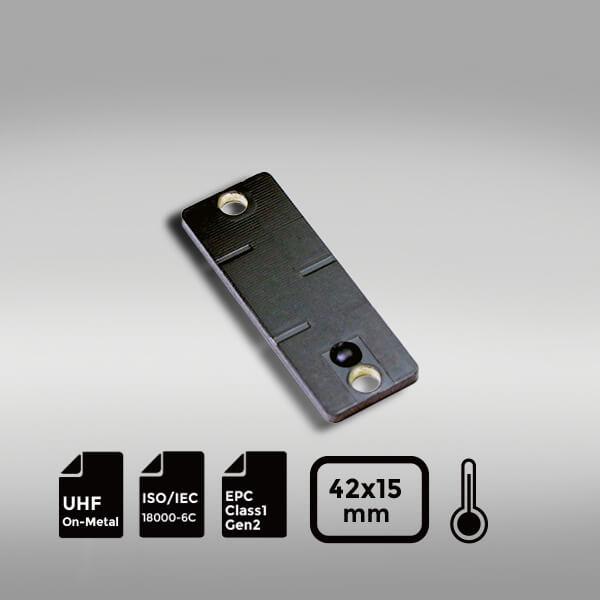
Heat Resistant Alien Higgs4 Heat Resistant Material UHF On-Metal Tag | 42x15mm
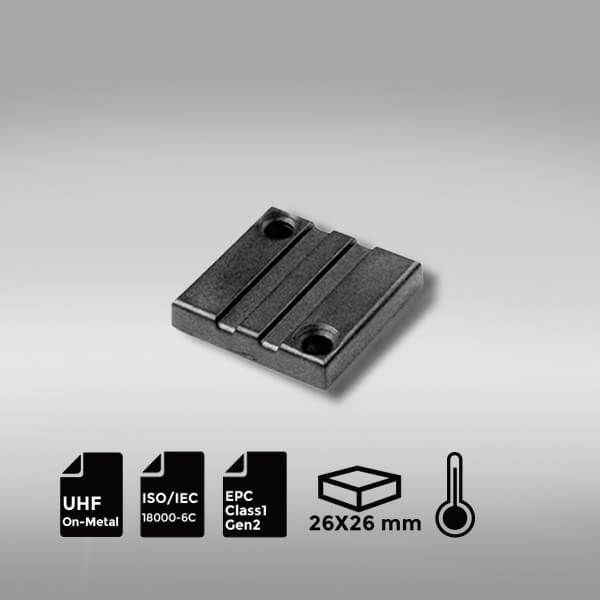
Heat Resistant Alien Higgs3 PPS RFID On-Metal Tag | 26×26mm


RFID Antenna UHF
15-Meter Cable for UHF RFID Fixed Reader
UHF Tag
4″x2″ 860-960MHz UHF RFID Label RFID M4D
UHF Tag
4″x4″UHF RFID Label Alien H3 | ISO18000-6C
RFID Antenna UHF
5-Meter Cable for UHF RFID Fixed Reader
HF Card
ABS RFID KEY-FOB Tag RFID Classic 1K
HF Card
ABS RFID KEY-FOB Tag RFID Classic 4K
HF Card
ABS RFID KEY-FOB Tag RFID Ultralight C
HF Tag
ABS RFID KEY-FOB Tag RFID Ultralight EV1
LF Card
ABS RFID KEY-FOB Tag ATA5577
LF Card
ABS RFID KEY-FOB Tag EM4200
HF Card
ABS RFID KEY-FOB Tag EM4305
HF Card
ABS RFID KEY-FOB Tag RFID TAG 213